For modules where there is a design engineering output in the form of significant coursework, a module leader or delegated representative selects one item of output for the Design Engineering Selected Innovation REcognition (DESIRE). This is a prestigious award within the School and something that we imagine all students shall aspire to win during the programme of study. DESIRE selected works need not necessarily be associated with the top mark or grade scoring project and may be awarded to a group of students or individual work. We expect DESIRE to become a badge of honour for Design Engineers. Our congratulations to all the winners!
Prizes for 2023/2024
- Year 1 Human Centred Design Engineering
- Year 2 Industrial Design Engineering
- Year 4 Design Engineering Master's Project
BRIEF STATEMENT FROM THE MODULE LEADER, DR CÉLINE MOUGENOT
The 'Human-Centred Design Engineering (HCDE)' module tackles urgent societal challenges by focusing on understanding and addressing people's needs. Emphasising empathy and rigorous user research in real-world contexts, students develop key skills in problem identification and solution development. By centring design on human experiences, HCDE ensures innovations are not only functional but also meaningfully enhance lives.
This year, 25 teams of four explored the theme of "Food for Health," aligning their projects with UN Sustainable Development Goals such as ‘Zero Hunger,’ ‘Good Health and Well-being,’ and ‘Reduced Inequalities.’
The winning teams, Libra and Forg, demonstrated excellence in applying human-centred design principles to address food insecurity and childhood obesity. Both teams actively engaged with real-world users—Libra with food bank volunteers and Forg with children and their families—employing field observations, interviews, co-design sessions, and solution testing. Their strong commitment to user engagement, effective project management, and teamwork led to practical, impactful solutions that have the potential to make a significant difference in their communities.
WINNING GROUP 1
Team members: Harrisen Crowder, Owen Lee Scott, Louis McEvoy, Ilayda Ozmerter
PROJECT TITLE:
Libra - "Smart Scale for Food Banks"
Libra is a smart scale designed to transform food bank operations by automating the management of food donations to tackle food insecurity.
In 2023, 17% of UK households faced moderate to severe food insecurity (source: Food Foundation), highlighting the crucial role of the country's 2,900 food banks and their 40,000 volunteers. Through extensive user research at Otley Community Larder in West Yorkshire, the team identified weighing and cataloguing as major challenges due to their time-consuming nature and resource limitations. To address these issues, the team developed an automated scale which weighs items, uses machine learning for food identification, and catalogues the recorded information for further analysis. Testing at Otley Community Larder showed a 60% reduction in weighing time and a threefold increase in data collection efficiency. Implementing Libra nationwide could significantly enhance food bank operations to better support communities in need.
WINNING GROUP 2
Team members: Selin Ibrahim, Safiyya Ahmed, Amelia Gustave, Sara Galal
PROJECT TITLE:
Forg - "prep, play, eat healthy"
A playful food preparation kit and container designed to engage children in preparation of nutritious meals.
 In 2023, less than 20% of children in the UK met the daily recommended intake of fruits and vegetables, and one in five 10-year-olds was obese (source: NHS), highlighting the need for early intervention. Forg offers a solution that provides children with the independence to prepare their own healthy snacks, whilst giving parents the confidence that they can do so, safely. A playful app, developed in collaboration with families and nutritionists, guides children through simple, step-by-step recipes that adapt to match their growing culinary skills. The app rewards children for their efforts, encouraging continuous engagement. Forg includes a foldable chopping board and child-friendly utensils, thoughtfully designed for ease of use and to foster a child’s sense of autonomy in the kitchen. Once snacks are prepared, they can be packed into the iconic Forg snackbox, perfect for taking to school and sharing proudly with friends. By enabling children to interact with nutritious foods in a fun and enjoyable way, Forg aims to help lay the foundations for a lifetime of healthy eating.
In 2023, less than 20% of children in the UK met the daily recommended intake of fruits and vegetables, and one in five 10-year-olds was obese (source: NHS), highlighting the need for early intervention. Forg offers a solution that provides children with the independence to prepare their own healthy snacks, whilst giving parents the confidence that they can do so, safely. A playful app, developed in collaboration with families and nutritionists, guides children through simple, step-by-step recipes that adapt to match their growing culinary skills. The app rewards children for their efforts, encouraging continuous engagement. Forg includes a foldable chopping board and child-friendly utensils, thoughtfully designed for ease of use and to foster a child’s sense of autonomy in the kitchen. Once snacks are prepared, they can be packed into the iconic Forg snackbox, perfect for taking to school and sharing proudly with friends. By enabling children to interact with nutritious foods in a fun and enjoyable way, Forg aims to help lay the foundations for a lifetime of healthy eating.
BRIEF STATEMENT FROM THE MODULE LEADER, DR. SHAYAN SHARIFI
Industrial Design Engineering focuses on a holistic process of solving engineering design problems, from user requirements through to final prototypes and manufacturing. The winning team developed a compelling and commercially viable product design solution based on genuine user insights. This solution was realised through engineered models and supported by a detailed production data package: a device that provides a sustainable method to prevent herders’ and farmers’ economic losses due to damage caused by large mammals. AROMA is an automated elephant deterrent focused on smell, designed for farmers whose livelihoods are at risk of destruction by elephants, while also ensuring the elephants are protected.
WINNING STUDENT GROUP
Team 03: Emily Haynes, Rafi Stobbs, Charlotte Andrews, Matthew Ball
PROJECT TITLE
Aroma: Save your crops. Protect our elephants.

BRIEF STATEMENT FROM THE MODULE LEADER, DR FREDDIE PAGE AND DR LORENZO PICINALI
The Master’s Project aims to provide students with the opportunity to work on a major piece of research in Design Engineering, using the knowledge, skills and attitudes learnt throughout the MEng in Design Engineering programme of study. Students are expected to implement a project at the edge of Design Engineering know-how, using new technology or exploiting scientific knowledge. From this year's cohort, four students' work as below have been selected for their outstanding achievements, rigorous process, and excellent outcomes.
WINNING STUDENTS
Student: Eva Brazier
Co-design aims to empower users in the design process, but power dynamics can undermine this goal. Using the Psychological Empowerment framework, Eva developed a codesign facilitation toolkit to evaluate the impact of a user-first participation approach on five dimensions of empowerment: Meaning, Competence, Self-Determination, Impact, and Power With. Workshops and interviews revealed that user-first engagement and spatial mapping generally enhance empowerment, though presenting ideas to designers can be disempowering. Recommendations include incorporating user brainstorming and spatial mapping in co-design sessions to promote empowerment.
Eva's Master’s Project is impressive due to her exceptional dedication and professionalism. She effectively linked theory to practice, creating a co-design facilitation toolkit valued by industry, including Deloitte. Eva conducted a rigourous literature review, shaped an original research objective, and managed extensive research, design, and evaluation. She engaged with stakeholders and experts to design a robust study protocol based on qualitative data collection and analysis. Eva is currently preparing her work for journal submission, showcasing her commitment to excellence beyond the Master's Project timeline.
Student: Chinene Chukwuma
Chinene’s Master’s project, centred around designing a digital platform to enhance firefighter’s situational awareness using IoT data and digital twins. Although firefighters were her primary stakeholders, Chinene actively sought and valued insights of Fire and Rescue Service (FRS) professionals across all levels of training, seniority, and backgrounds. Her proactive engagement through interviews and workshops allowed her to capture a wide array of needs and ideas, significantly enriching the project’s impact and relevance beyond typical academic efforts. She went above and beyond expectations in her user centred design approach to arrive at a solution, which the FRS are keen to develop further.
Student: Joe Johnson
Last year, Joe became aware of the fact that the Dyson School of Design Engineering has a leading role in AutoFair (2022-25). This is an EU flagship project tasked with understanding unfairness in artificial intelligence (AI), and developing new algorithms for AI fairness (AIF). Joe has rare skills as a software engineer, but is also concerned with the human and societal impacts of technology. We therefore tasked him with the development of Python code for remediating three different manifestations of unfairness in training data, each based on recent novel algorithms developed in the Dyson in collaboration with our European colleagues. We needed the implementations to become part of the standard open-source AIF360 library, ensuring that practitioners could readily access and use them. Not only did Joe fully succeed in these aims, but he provided new evidence for the performance of the algorithms by testing them on key benchmark data sets. This progress is undoubtedly going to matter to the delivery of the Dyson mission within AutoFair, and to the AIF agenda more generally. What was particularly impressive about Joe’s achievement was how he managed to learn enough about the (very challenging) theory and principles underlying the algorithms, without getting swamped in detail. He had a clear sense – born of his education as a design engineer – of how best to deploy his particular skills in software in the effective delivery of impact.
Student: Ivan Revenga Riesco
This was a project of the highest calibre that leveraged new techniques in multi-axis multi-material additive manufacturing in the design, simulation, manufacture, characterisation, analysis and practical demonstration of first-of-their-kind complex conformal antennas. The project was very high risk insofar as Ivan was first required to refactor and tune a bespoke 5-axis multi-material printer before being able to progress with the fabrication and characterisation of the antenna structures of interest. Ivan managed to convincingly demonstrate that the conformal antennas at S-band and UWB outperformed their planar counterparts, and demonstrated them working well with off-the-shelf radio hardware. Beyond improved antenna performance, the approach taken also significantly enhances manufacturing and material efficiency. Outstanding!
Prizes for 2022/2023
- Year 1 Human Centred Design Engineering
- Year 2 Industrial Design Engineering
- Year 3 Design Engineering Futures
- Year 4 Enterprise Roll-Out
- Year 4 Design Engineering Master’s Project
BRIEF STATEMENT FROM THE MODULE LEADER, DR CELINE MOUGENOT
Human Centred Design Engineering module focuses on designing experiences that resonate with their end users and fit into a wider socio-cultural, technological and business context. This year, 25 teams imagined, prototyped and tested design concepts around the topic of sustainable behaviours. The winning teams were selected for their excellent implementation of a human-centred design approach and excellent team dynamics.
WINNING GROUP 1
Team members: Greg Hamlet, Vaibhav Singh, Yifan Wu, Yang Zhang
PROJECT TITLE:
Arete - "Empowering kids to explore"
Our problem area was the excessive waste produced by children's clothing. We identified our target users as children aged 6-10 because their growth rate and rougher activities produced excessive waste. Our user-centered design is a multi-purpose and functional jacket that improves the user experience while increasing the product's lifespan. The main features include adjustable sizing increasing the size range by 50%, a concealed hood, reversible fleece material/ waterproof polyester shell, and reinforced joint pads.
WINNING GROUP 2
Team members: Sarah Gu, Dylan Hoang, Reiya Ing, Surya Vijayanand
PROJECT TITLE:
FOLDS – “One shoe, endless styles”

Every year, around 23 billion shoes are made of which 300 million are disposed of in the UK alone. Alongside this, large bills of materials, complex manufacturing processes and mass overconsumption in the shoe industry leads to excessive waste. Inspired by origami, the FOLDS shoe aims to tackle this issue by being made of a single net of material. It can be folded to change its style and function which simplifies manufacturing processes, and reduces material usage and costs.
WINNING GROUP 3
Team members: Zile Feng, Zhihan Wang, Zhuoxiaoyue Wang, Alina Zhang
PROJECT TITLE:
Garden – a cosmetic managing ecosystem

Garden addresses the issue of cosmetic wastage and over-purchasing in the face of increasing consumerism. It offers features aimed at reducing the uncertainty related to cosmetic expiration dates and helps users identify underused cosmetic products through a gamified approach. Garden is intended for users interested in adopting more sustainable lifestyle practices or finding it challenging to remember and manage their existing cosmetic products.
WINNING GROUP 4
Team members: Javier De la Fuente Guillen, Cesar Asensio Delgado
PROJECT TITLE:
Remodelling waste, brick by brick

Our society is growing exponentially, and so is our waste. Since the removal of most public bins due to terrorism history in Central London, Londoners have to pile their waste on the streets, leading to public health and environmental hazards. Brickify proposes a ground-breaking alternative concept to the current waste management system: creating standardised-size garbage bricks with our bi-axial trash compactor. This would enhance storage and transportation, and prevent dangerous diseases, making it safer for all Londoners.
WINNING STUDENT GROUP: Freya Wennergren Ridgwell, Mia Stevens, Shreya Jei, Lena Westerburg Burr
PROJECT TITLE: Elvie Latch: An educational device designed to empower, encourage, and enable individuals to achieve an optimised breastfeeding latch.
BRIEF STATEMENT FROM THE MODULE LEADER, DR. SHAYAN SHARIFI
Industrial Design Engineering focuses on holistic design processes applied to an engineering design problem. The course takes the students through the process of solving an engineering design problem from user requirements to final prototype and manufacturing. The winning team developed a compelling and commercially viable product design solution, based on genuine user insights, realised to engineered models, supported by a detailed production data package; which is designed to empower, encourage, and enable expectant mums to have the option of exclusive breastfeeding for the WHO-recommended six months. This device provides guidance on positioning and latch quality, addressing challenges that impact infants’ health and new mothers’ physical and mental well-being.

WINNING STUDENT GROUP: Owain Pill, Rory Bateman, Isaac Winson-Bushby, Felix Brochier, Alexander Themistocleous
PROJECT TITLE: Flowpatch

BRIEF STATEMENT FROM THE MODULE LEADER, DR. NAN LI
This project addresses the pressing issue of water pipe leaks in London, a problem expected to escalate in the coming years. The proposed solution involves the implementation of an autonomous robotic pipe repair system. The outcome of this project is exceptional. The suggested service, built upon an innovative soft robotic design concept, displays high level of originality. Additionally, the modelling, simulation, and visualization efforts showcasing both sub- and system-level outcomes are commendable.
WINNING STUDENT GROUP: Lily Owuye, Neil Patel, Harris Mier, Arturo Cano Amoros, Yang Liang
PROJECT TITLE: Circulate

BRIEF STATEMENT FROM THE MODULE LEADER, DR. NAN LI
Leveraging the innovative concept of battery swapping, the team uniquely addresses ownership, security, and trust in battery performance, key for the upcoming era of electric vehicles. By integrating various technologies such as Distributed Ledger Technologies (DLTs) and Physical Unclonable Functions (PUFs), alongside a comprehensive system design, they demonstrate a remarkable level of novelty in their approach. Additionally, the team's work in developing the digital embodiment effectively brings the proposed future concept to life, showcasing a commendable level of technical analysis on each subsystem while maintaining a broad vision of the overall system concept.
WINNING GOUP: Mentis
TEAM MEMBERS: Leila Al-Azzawi, Itziar de Pedro Sarasola, Esther Del Portillo, Robert Field and Sean Wisskirchen
BRIEF STATEMENT FROM THE MODULE LEADER, DR PELIN DEMIREL
The AI powered recruitment platform Mentis aims to improve the quality and diversity in recruitment and has already made significant progress with onboarding corporate clients. Their coursework has been covered by the College and the team’s pitch at the competition is available here: Mentis team pitch.
I have been most impressed with this team's ability to seek feedback from a diverse range of stakeholders and integrate this into their work very effectively. They worked very well as a team, supporting each other and had very high ambitions for their work. They set a wonderful example for our incoming ERO projects and raised the entrepreneurial ambitions of the MEng students in all years.
BRIEF STATEMENT FROM THE MODULE LEADER, DR FREDDIE PAGE AND DR LORENZO PICINALI
The Master’s Project aims to provide students with the opportunity to work on a major piece of research in Design Engineering, using the knowledge, skills and attitudes learnt throughout the MEng in Design Engineering programme of study. Students are expected to implement a project at the edge of Design Engineering know-how, using new technology or exploiting scientific knowledge. From this year's cohort, four students' work as below have been selected for their outstanding achievements, rigorous process, and excellent outcomes.
WINNING STUDENTS
Student: Thomas Godden
Project Title: The Full Software Stack for the Sim-To-Real Transfer of a Learned Bipedal Walking Policy
Synopsis:
Thomas Godden
This project develops the the sim-to-real transfer of a reinforcement learning bipedal walking controller. A joint controller and state estimator are written to facilitate real-time control of the physical hardware. A simulated robot model, parameter estimator, and reward function are made to enable an RL algorithm to learn how to generate and stabilise a walking gait. The policy trained in simulation is then transferred onto the real hardware. The results show that the learned controller has generalized enough to be able to stabilize the physical system despite modelling discrepancies and sensor noise.
PROJECT STATEMENT FROM THE MODULE LEADER
This project involved development of full software stack for sim-to-real transfer of a bipedal walking policy. The project outcome was demonstration of partial functionality in hardware indicating that the learned policy had begun to generalise. This is a very impressive outcome in the time concerned and given the resources. Thomas really has developed an advanced understanding of the technology and re-enforcement learning control algorithm for the gait. Of particular note Thomas presented a whole system vision with sensor fusion, motion planner, high level motor control, low level motor control and actuation. Exceptional work. – Prof. Peter Childs
Student: Eve Williamson
Project Title: Navigating Barriers and Enablers: Towards Plastic Waste Reduction in Humanitarian Procurement
Synopsis:
Eve Williamson
While delivering critical relief items, the humanitarian sector contributes to a significant plastic waste pollution problem for beneficiaries receiving aid. The transition towards sustainable procurement and plastic waste reduction is thus paramount to reducing negative environmental impacts and strains on local systems. However, the intricacies of humanitarian procurement, coupled with the urgency of response, complicates the integration of such practices. The overarching aim of this study is to foster a practical approach to plastic waste reduction in humanitarian procurement, bearing in mind the exigencies of the sector and its unique operating environment.
PROJECT STATEMENT FROM THE MODULE LEADER
An outstanding project with a seamless project management that has led Eve to push herself beyond the brief of a master project into a real-world immediate impact.She has showcased an incredible capacity to learn, study and analyse a very complex world that is the humanitarian aid sector and climate change. She has gathered a very large amount of data through thorough interview processes with key stakeholders. She has managed to reach very highly placed experts of the humanitarian aid and managed to share her project that led to a high interest from those experts to offer to push the project to the next stage with an actual implementation in the industry. The project has moved beyond a master project but to a real impact for a sector in desperate need of innovation and change. Eve’s passion and hard work has been a constant during this project and the result will have a real-world impact beyond this academic timeline. – Audrey Gaulard
Student: Fern Pitiporn Panpoonsup
Project Title: Designing A Kiosk User Interface For People Experiencing Homelessness
Synopsis:
Fern Pitiporn Panpoonsup
This study presents a user interface (UI) design for a homelessness kiosk in London, focusing on providing service information. Using a User-Centred Design (UCD) approach, the study addresses the limited research on challenges faced by homeless individuals in accessing services. Semi-structured interviews with nine participants from homelessness charities and field research were conducted. Thematic analysis revealed four key themes: inclusivity, content availability, user experience, and privacy/security. Based on these findings, UI design criteria were established, aiming to enhance user experience, trust, and autonomy.
PROJECT STATEMENT FROM THE MODULE LEADER
Fern has been an exemplary DesEng student throughout the entire project. She has been strongly driven by this topic and worked autonomously to reach her goals. She has approached this project systematically and has gone beyond expectations in terms of user engagement considering the vulnerability of her project population (homeless individuals). In addition, she has involved several different stakeholders as part of the user research in an independent and driven way. – Dr. Nejra van Zalk
Student: Sibylle Rérolle
Project Title: CropSense: An AI-Based Precision Agriculture Tool for Coconut Farm Monitoring using Remote and Ground Sensing Methods
Synopsis:
Sibylle Rérolle
Precision agriculture has gained significant importance in addressing the challenges of deforestation and excessive chemical usage in the face of increasing food demand. This study focuses on coconut cultivation, which plays a crucial role in the economies of many countries and is particularly vulnerable to climate change and the destructive Red Palm Weevil (RPW). Current detection methods are impractical at large scale. This study explores the use of multispectral images to monitor coconut tree health and detect RPW infestation, by identifying spectral signatures.
PROJECT STATEMENT FROM THE MODULE LEADER
This project has real opportunity of creating a positive impact within palm tree agriculture. Project has been explored both from a human and a tech perspective. A clear and compelling case a laid out for the need and potential impact of innovation in this space, that aligns excellently with the intervention presented. Supported by an Impact Acceleration grant, Sibylle got the opportunity to visit Sri Lanka to meet the growers to obtain feedback on infestation detection and tree health monitoring plan.
Prizes for 2021/2022
- Year 1 DESE40004 Human Centred Design Engineering
- Year 2 DESE50005 Industrial Design Engineering
- Year 3 DESE60001 Design Engineering Futures
- Year 4 DESE97018 Design Engineering Master’s Project
BRIEF STATEMENT FROM THE MODULE LEADER, DR CELINE MOUGENOT
The Human Centred Design Engineering module focuses on designing experiences that resonate with their end users and fit into a wider socio-cultural, technological and business context. This year, 31 teams imagined, prototyped and tested design concepts around the topic of personal safety in urban contexts. The three winning teams – Squid, Aerial and Talos - were selected for their excellent implementation of a human-centred design approach.
WINNING GROUP 1
Team members: Paul Eichmann, Freya Wennergren Ridgwell and Qiongyu Zhang
PROJECT TITLE: SQuid – a device that makes online banking more inclusive by increasing the tangibility of digital money SQuid was created by users for users, providing support in raising awareness for financial security, improving tangibility of digital money, quick access tracking, promoting a more intuitive online banking user interface and making banking inclusive and accessible to all.
SQuid was created by users for users, providing support in raising awareness for financial security, improving tangibility of digital money, quick access tracking, promoting a more intuitive online banking user interface and making banking inclusive and accessible to all.
WINNING GROUP 2
Team members: Liam Jones, Katherine Luo and Isaac Siy
PROJECT TITLE: Aerial: A cycling assistant that provides real time proximity warnings, navigation assistance, and enhanced environmental awareness. With a growing interest in cycling and other soft mobility options further increased through COVID, a reinvigorated focus on improving user safety and lowering the barriers to entry to these transport methods was developed. Across the UK, most cycling accidents are caused by issues with communication and awareness, such as "misjudging others' speed". Our sleek and seamless design comes with a warning system based on the relative velocities of other users, a projected navigation system to avoid interruptions, and laser-based pothole detection and indication. These systems can be managed by an app, and customised to user needs and capabilities.
With a growing interest in cycling and other soft mobility options further increased through COVID, a reinvigorated focus on improving user safety and lowering the barriers to entry to these transport methods was developed. Across the UK, most cycling accidents are caused by issues with communication and awareness, such as "misjudging others' speed". Our sleek and seamless design comes with a warning system based on the relative velocities of other users, a projected navigation system to avoid interruptions, and laser-based pothole detection and indication. These systems can be managed by an app, and customised to user needs and capabilities.
WINNING GROUP 3
Team members: Ria Dhopatkar, Avyay Jamadagni and Justin Keung
PROJECT TITLE: Talos – a wearable that prevents theft of personal belongings on public transport Designed for young commuting professionals, Talos aims to transform the commuting experience by making users feel more confident about protecting their valuables during commutes. Users attach tags to devices they want to protect and wear a central device on their body. When the tag is further than a certain distance away from the central device, two things happen: the central device vibrates to alert the user, while the tag sirens alerts other commuters of the theft.
Designed for young commuting professionals, Talos aims to transform the commuting experience by making users feel more confident about protecting their valuables during commutes. Users attach tags to devices they want to protect and wear a central device on their body. When the tag is further than a certain distance away from the central device, two things happen: the central device vibrates to alert the user, while the tag sirens alerts other commuters of the theft.
BRIEF STATEMENT FROM THE MODULE LEADER, DR. SHAYAN SHARIFI
The Industrial Design Engineering module focuses on holistic design processes applied to an engineering design problem. Students are taken through the process of solving an engineering design problem from user requirements through to final prototype and manufacturing. The winning team developed a compelling and commercially viable product design solution, based on genuine user insights, realised to engineered models, supported by a detailed production data package; a device that detects sleep paralysis through increased heart rate and open eyes, and wakes up the user to end the episode by overhead lights and vibration of a wearable device.
WINNING STUDENT GROUP: Team 02: Benjamin Lovell, Archie Bond, Ruby Grut, Rosie Davies
Project Title: Oura Rise: Track, detect, and end episodes of sleep paralysis
Please note: Oura were not engaged in any consultancy or collaborative capacity with this project and the outcome is in no way endorsed by them. Any publicity is limited to personal and academic use.
WINNING STUDENT GROUP: Camilla Giulia Billari, Hannah Knight, Naini Mandal, Sibylle Rérolle, James Skinner
PROJECT TITLE: Commend
BRIEF STATEMENT FROM THE MODULE LEADER, DR. NAN LI
The proposed product service system ‘Commend’, which aims to support and empower future rainforest communities in making better-informed choices, is very innovative, interesting, and meaningful. The idea of having an augmented reality agent embedded in the forest through multiple sources of information and with growing capability to put together resources and communities to solve complex economic problems is very visionary. The fit with emerging trends of metaverse and cultural grounding of technology is impressive.

WINNING STUDENT GROUP: Irina Barzykina, Amber King, Imogen Guss-Renton, Madelaine Wood
PROJECT TITLE: Visionary – the future of inclusivity 2041
BRIEF STATEMENT FROM THE MODULE LEADER, DR. NAN LI
The proposed product service system ‘Visionary’ which helps people with visual impairment to address their self-expression needs is innovative, interesting, and meaningful. Highly original scenario that goes beyond the state-of-the-art on visual perception and haptics thanks to the contextualised and user-centred approach. The technical developments are always guided by the user research insights, which makes the final future scenario, not only original from a technical point of view, but also highly desirable from a users’ perspective.
BRIEF STATEMENT FROM THE MODULE LEADER, PROF. RAFAEL CALVO
The Master’s Project aims to provide students with the opportunity to work on a major piece of research in Design Engineering, using the knowledge, skills and attitudes learnt throughout the MEng in Design Engineering programme of study. Students are expected to implement a project at the edge of Design Engineering know-how, using new technology or exploiting scientific knowledge. From this year's cohort, four students' work as below have been selected for their outstanding achievements, rigorous process, and excellent outcomes.
WINNING STUDENTS
Student: Shafae Ali
Project Title: Automated Computational Design for Personalised Wearable Footwear Technology
Synopsis:
Shafae Ali
This work achieves a computational design pipeline that automatically generates user-specific footwear from a 3D foot scan, embeds a volumetric autorouted circuit with integrated sensors around the shoe, and adapts surface design based on an image input. The footwear was prototyped, and 3D printed using foaming TPU on a single extruder 3D printer, resulting in a monomaterial variable density shoe, producing 23.8% of CO2e in manufacturing processes compared to existing sneakers. Sensors are used to track motion, pressure and temperature which is then used for human activity recognition through local machine learning. The circuit was manufactured on a low-cost £500 FDM dual extrusion 3D printer using conductive TPU filament.
PROJECT STATEMENT FROM THE MODULE LEADER, PROF. RAFAEL CALVO
Shafae applied everything learned in the Design Engineering programme to produce an innovative type of footwear, advancing concepts to support walking - the most sustainable and healthy form of mobility. Reviewers were particularly impressed by how Shafae used new materials to produce this single-material solution. The project showed evidence of excellence in Design, Engineering and Innovation. His engagement with external partners also demonstrate other skills in team working and translation.

Student: Abigail Langbridge
Project Title: Respiratory-Aware Routing: An Individualised Pollution Mitigation System for Cycle Commuters
Synopsis:
Abigail Langbridge
Transport emissions are globally recognised as a worsening problem, with the cost to the NHS alone forecast to reach £10 billion by 2035. Those travelling in urban areas using active modes are particularly at risk of harm from these emissions due to their increased breathing rate and proximity to vehicles, however this risk is poorly quantified. This work presents a proof-of-concept system for the optimisation of pollution inhalation, demonstrating the remarkable variation of risk between individuals travelling between the same origin and destination. In particular, this work highlights that individuals' risk is strongly dependent on their fitness, with up to three times more pollution inhaled by the less fit subject. This finding demonstrates that personalised commute optimisation could be a hugely effective method of reducing pollution risk, improving the net benefit of active commuting to cyclists in urban areas.
PROJECT STATEMENT FROM THE MODULE LEADER, PROF. RAFAEL CALVO
The report by Abigail demonstrates excellence in the design and execution of an artificial intelligence (AI) and data project. The reviewers highlighted how in each of the studies that form the components of the project. The way the aim was broken down into these components showed a natural instinct for research and development. The work itself showed high rigour and as such clear validation and evaluation of the findings.


Student: Alfie Mcmeeking
Project Title: 3D Printing Self-Healing Footwear With Genetically Modified Bacteria Loaded Bio-inks
Synopsis:
Alfie Mcmeeking
Each year 23 billion pairs of footwear are created, with greater than 300 million disposed of in the same period. Of this footwear, designed to be replaced frequently to keep up with fast fashion and align with the latest trends, 80% are sent to landfills and 20% are incinerated. This model is unsustainable, with large amounts of carbon emissions also produced in the manufacture and transportation. The manufacturing methods and material proposed in this project would result in a 62% reduction in CO2 produced from the life cycle of the shoe. Methods for bacterial growth, along with a computer vision mould detection alert system have been created. Optimised growth mixtures were applied to Micro-3D printing, in which the bacteria directly fill out the form of the shoe. Following the growth of the bacterial pellicle, a method of sterilisation was proposed which produces 33 times fewer carbon emissions than conventional methods. Finally, a second method for shoe production was used, in which a Bacterial nanocellulose-based gel was created and printed using an extrusion 3D printer. This material was extensively tested against footwear requirements.
PROJECT STATEMENT FROM THE MODULE LEADER, PROF. RAFAEL CALVO
Reviewers felt this was an extraordinary effort producing a novel way of manufacturing shoes in a very sustainable way, literally seeking sustainable growth. The report is a fascinating paper that explores the use case of self-healing shoes facilitated by genetically modified bacteria. The methodology is highly detailed and evidence is thoroughly documented. The findings provide strong validation for the product, even though the development and testing remains at rather small scale for now.


Student: Adedunke (Dedun) Oyenuga
Project Title: Sink or Swim? Designing a Web-App to Support Black Women Suffering from Impostor Syndrome
Synopsis:
Adedunke (Dedun) Oyenuga
The impostor phenomenon is disproportionately high among people of African and/or Caribbean descent (Bravata et al., 2019). This project took an intersectional approach to exploring experiences of impostorism, by specifically studying it amongst black women. It involved a user research study including (1) a systematic content review of existing mental health apps, (2) a statistical analysis of impostor syndrome amongst different demographics and (3) interviews with 9 black women and other key stakeholders. The study concluded in the design of a mental health web-app,‘Swim’, specifically designed to support black women experiencing impostor syndrome. This design was completed via a series of participatory workshops where the outcome was a prototype created in Figma.
Swim is a mood-tracking app that enables users who experience impostor syndrome to (1) label their impostorism feelings, (2) rate their intensity, (3) identify where these feelings have come from and (4) take appropriate action to tackle them. It is designed to calm users who need relief from immediate, emotionally heightened periods of impostor syndrome, but also designed for long-term management of the phenomenon.
PROJECT STATEMENT FROM THE MODULE LEADER, PROF. RAFAEL CALVO
The project by Dedun showed excellence in design and the understanding of a 'human systems' type of project with a focus on a problem that affects the health and ageing of many, particularly minority groups in society. Motivated by her personal values, Dedun focused on a very difficult and understudied problem, designing a solution informed by multiple stakeholders.

Prizes for 2020/2021
- Year 1 DESE40004 Human Centred Design Engineering
- Year 3 DESE60001 Design Engineering Futures
- Year 4 DESE97018 Design Engineering Master's Project
STATEMENT FROM THE MODULE LEADER
Human Centred Design Engineering focuses on designing solutions and experiences that resonate with their end users and fit into a wider socio-cultural, technological and business context. This year, 30 teams imagined, prototyped and tested design concepts around the topic of wellbeing. The three winning teams - Hebe, Breathe and PortaPens – produced strong design outcomes through a rich set of user-centred design methods and a rigourous process.
WINNING GROUP 1
Team members: Laura Bastos, Eva Brazier, Joe Johnson
PROJECT TITLE Hebe: a unique combination of a skipping rope, resistance band and dumbbells to diversify older adults exercise routines.

Cardio, strength and flexibility are the three pillars for a balanced and active lifestyle. Most older adults focus on only one, often neglecting strength and flexibility. Prevent and reverse the effects of ageing with Hebe, an inclusive multifunctional and app-enabled skipping rope that guides the user through the 3 types of exercise.
WINNING GROUP 2
Team members: Harris Mier, Lily Owuye, Shangyun Shi
PROJECT TITLE
Breathe: A smart desktop device that promotes well-being through controlled breathing and guided meditation

Covid-19 forced many people into a new remote working routine, for which they were unprepared. Our inquiry showed that users had a strong association between their usual office and work, but also an association between home and rest. This subconscious association meant user's remote working days are driven by time consuming non-important habits that take a toll on their productivity but, more crucially, on their physical and mental well-being, primarily through stress and the generation of Cortisol, otherwise known as the stress hormone.
Our concept, differentiated to the surrounding market by accessibility and affordability, aims to reduce this negative impact of remote work with a desktop device that prompts users to take regular constructive breaks from work to participate in guided meditation. During which, onboard LEDs pulse at a customisable pace to slow and focus the user's breathing. Research shows that this practice has countless physical health benefits. Furthermore, a built-in heart rate sensor is used to monitor users' health, providing instant feedback to encourage users to break from or continue with their work, based on the devices prediction of their well-being, this is simply communicated with colour coded lighting.
As previously mentioned, the device is fully customisable, from the colour of the product’s over- moulded rubber surface to the colour and pace of the guided breathing LED prompt. With this customisability, we hope to create a comforting familiar experience that earns its place as an everyday remote working convention.
WINNING GROUP #3
Team members: Lavinia Bocaniala, Xianghao Wang, Rita Yammine
PROJECT TITLE
PortaPens: a personalisable, compact and portable skincare storage and application system for teenagers with acne.

PortaPens offers a simplified solution to encourage teens who struggle to maintain their skincare routines consistently to improve their acne. It includes refillable product pens for hands-free application & extra space to store acne medication, all stored in a small, sleek and hygienic case.
WINNING STUDENT-GROUP Alfie Mcmeeking, Andy Ferdinand, Shafae Ali, Judith Weill; Premal Gadhia
PROJECT TITLE Reality – the Future of Footwear
STATEMENT FROM THE MODULE LEADER
This is a hugely impressive project. It excellently combines a creative and innovative response to the global environmental impact of shoes with very thorough and exciting exploration, not just of one, but a number of areas of development which are very plausible in the shoe futures roadmap. The team have consistently gone the extra mile with the work and added excellent value to the individual concepts. The project demonstrates exceptional engineering design development and embodiments, involving rigorous research, product development and evaluation

WINNING STUDENT-GROUP
Noor Ali, Rhiannon Beddoe, Anais Engelmann, Oscar Jones, Coline Ritz
PROJECT TITLE
[EM]POWER - Future decentralised energy systems to alleviate urban poverty

STATEMENT FROM THE MODULE LEADER
The group proposed a very interesting and meaningful topic to tackle the future poverty problems through a decentralised community energy system. The project has great originality and was executed excellently, with outstanding and innovative system design and strong engineering design development process. The results are comprehensive, and the analysis and evaluation are exceptionally insightful.
ASSIGNMENT
Final Year Project – October 2020 – June 2021
BRIEF STATEMENT FROM THE MODULE LEADER
The Master’s Project aims to provide students with the opportunity to work on a major piece of research in Design Engineering, using the knowledge, skills and attitudes learnt throughout the Master programme. Students are expected to implement a project at the edge of Design Engineering know-how, using new technology or exploiting scientific knowledge. This year, 51 students delivered their master projects. Four Students were selected for their outstanding achievements, rigorous process, and excellent outcomes.
WINNING STUDENTS
Student: Jordi Albanell Flores
Project Title: Developing a Virtual Reality hearing tool for teenagers with Bilateral Cochlear Implants

Student: Rachel Brown
Project Title: Using Flexibility in Design to Improve the Future Social Cost of a Metro System

Student: Tomas Knaze
Project Title: Promoting Trust in Autonomous Vehicles: The Effects of Personality on Trust and Utilising AR During Automation Takeover

Student: Hannah Quereshi
Project Title: The Feasibility of a 2D Video Game for Reducing Symptoms of Social Anxiety: A Pilot Study

Prizes for 2019/2020
- Year 1 DESE40004 Human Centred Design Engineering
- Year 3 DESE96006 Design Engineering Futures
- Year 4 DESE97006 Solo Project
DE1 - Human Centred Design Engineering
Assignment:
Group human centred design project consisting of several submissions carried out over two years
Statement from the Module Leader:
Human Centred Design Engineering focuses on making products that resonate with their end users and fit into a wider business, technological and cultural context. This year, 29 teams produced designs around the topic of physical wellbeing and engaged users to identify actual needs, gather feedback on concepts, and ultimately validate their designs. 3 Teams are granted the DESIRE award this year. These teams showed excellent human-centred design process and strong design outcomes.
Winners:
Project title and description:
Protec: A noise monitoring device that integrates into existing PPE for the construction industry.
Team Members: Eve Williamson, James Skinner, Tianxiao Wang

"The ‘SHIELD’ clips onto a pair of ear defenders, integrating into worker’s daily wear, in a clearly visible position. Once dangerous noise levels in the environment are detected, the on-screen display lights red to prompt the user to put on their protection. This eliminates the uncertainty of when ear protection should be put on.
Devices are calibrated individually, based on the attenuation level provided by the user’s ear protection. After placing protection over the ears, the shield accounts for this; turning green when it's safe to remove the defenders, orange if the user is protected, but not safe to take off, and red to indicate that the current protection is insufficient. This confirms whether the user is properly shielded."
Project title and description:
The Model G: An ergonomic keyboard built directly into the frame of a laptop.
Team Members: Daniel Rebollini, Joseph Folkes, Amber King

"Introducing the Model G, the world’s first keyboard for the new NIK Standard. An ergonomic keyboard built entirely into the frame of a normal laptop, with no sacrifices in ergonomics or portability. Designed from the ground up to allow users as much freedom as possible in using laptop keyboards, while helping reduce wrist strain."
Project title and description:
Glow: A discreet belt to alleviate menstrual pain
Team Members: Alana Bralsford, Josh Lowe, Itziar de Pedro

"A modern solution to an age-old problem. Combing comfort and effectiveness has resulted in a blend of innovative design that conforms to our user insights. The breathable material ensures you keep dry by evenly spreading sweat across the surface in order for it to evaportate more quickly. The pads are removable so the belt can be washed. From the heat being applied front and back, the adjustability of the belt strap and the simplicity of putting in the heat pads, user feedback has defined the way our belt fits and behaves."
DE3 - Design Engineering Futures
Assignment:
Group Project
Winners:
Marcus Melconian, Luke Holland, Elvis Lee, Benjamin Collis with: NTX - prosthetics to future HCIs
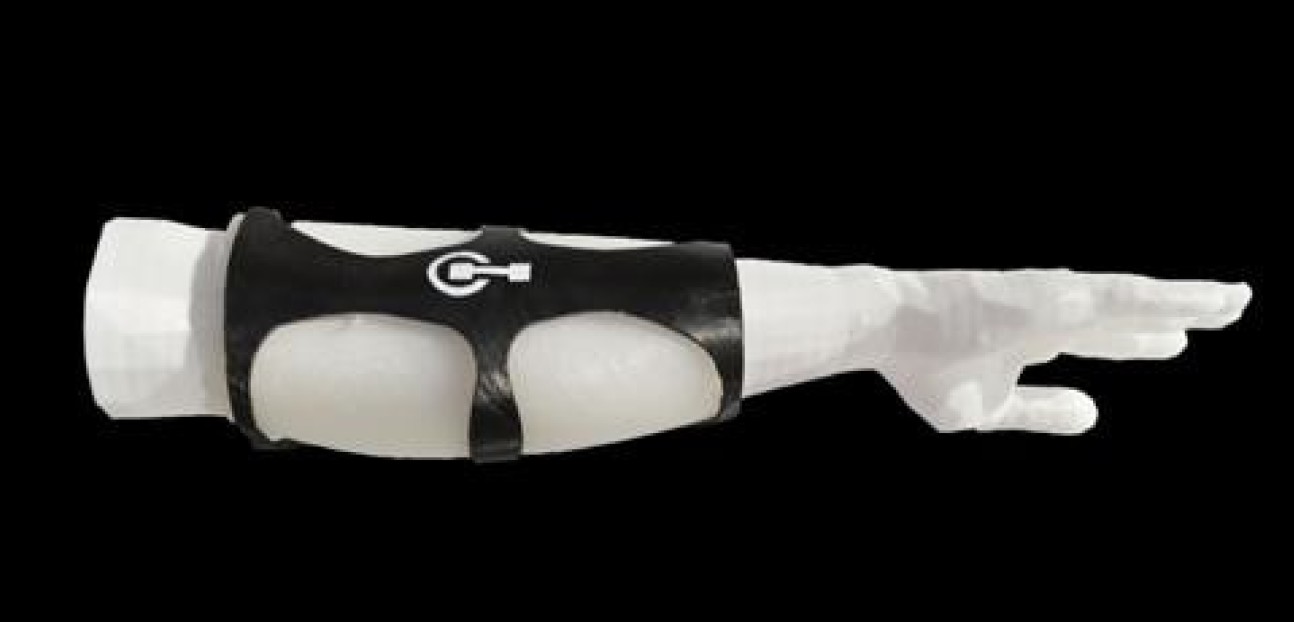
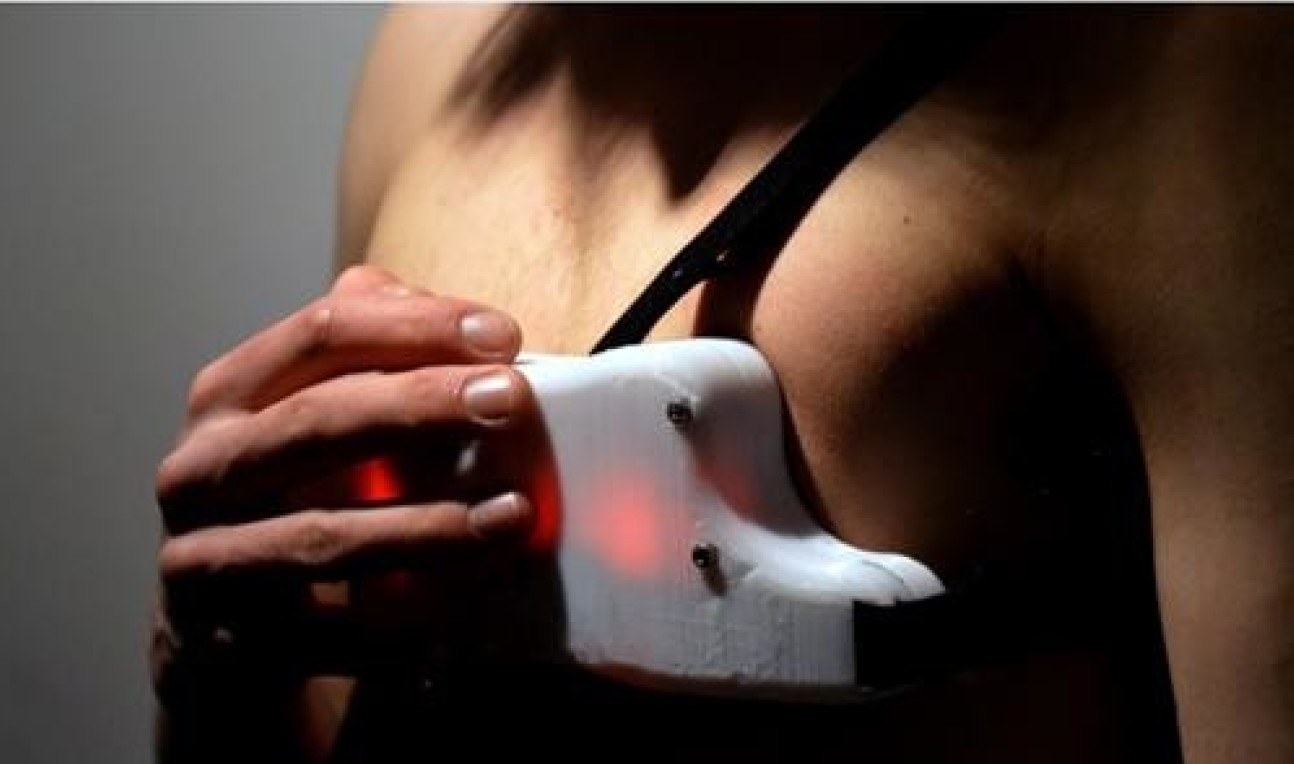
Statement from the Module Leader:
Rooted in grounded technology on haptic feedback in prosthetics, the group developed a novel idea on the delivery of a tangible futures product service system - NTX, with the ability to connect humans to the digital world in revolutionary new ways. Exceptional engineering design development process and embodiments, involving rigorous research, product development, and testing was conducted.
Winners:
Priyen Morjaria, Pasinee Posirisuk, Rachel Brown, Sirada Supanwanich, Barty Pitt with: Extensio - the future of hand exoskeleton design
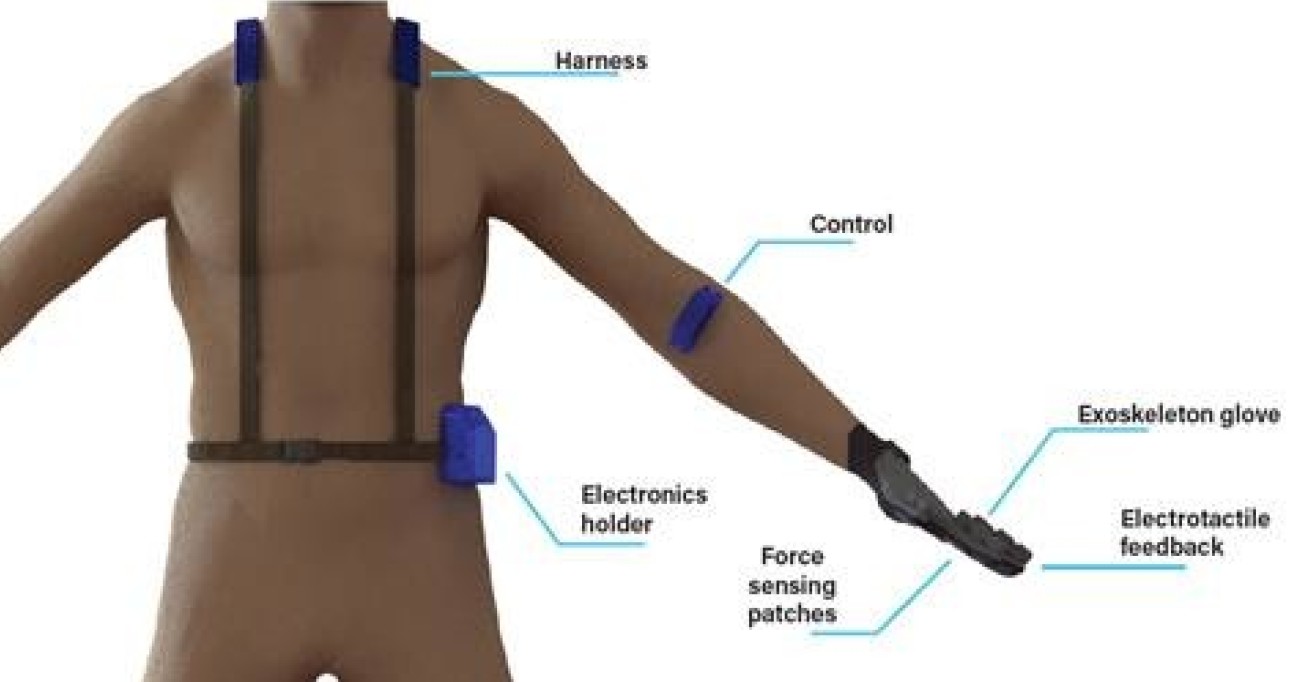
Statement from the Module Leader:
Extensio is a future concept for a hand exoskeleton incorporating haptic feedback designed specifically for stroke patients with impaired hand dexterity and sensation, which will deliver great social impact. The team has conducted an exceptional engineering design process in which a rigorous approach was taken to guarantee that the proposed concept was feasible.
DESIRE Award for Sustainability
Winner: Gabriele D’Amone
Project title: Butterfly – Indoor Air Quality
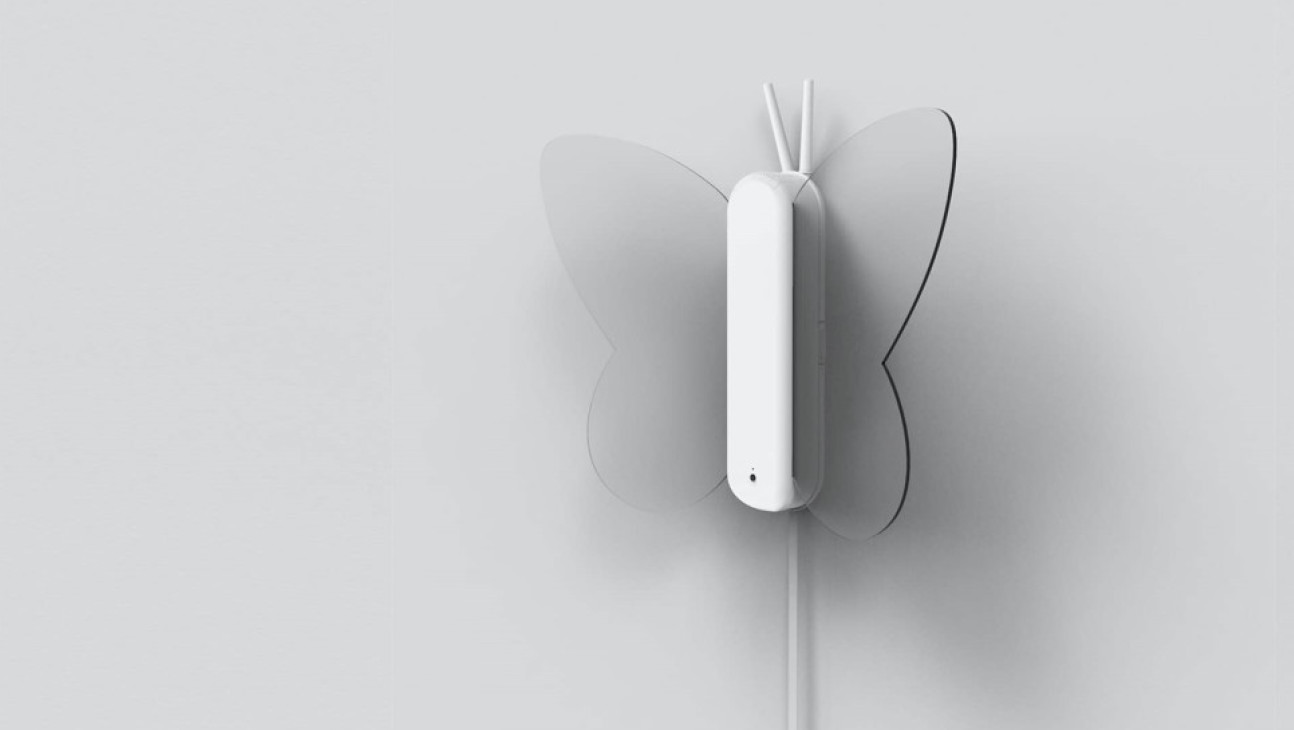 "Indoor Air Quality (IAQ) can impact the health and productivity of building occupants. However, current devices show poor accuracy and confusing readings communication. Butterfly is the first IAQ monitor with a computationally optimised sensing chamber, which enables superior airflow control and unparalleled sensing quality. A 90% faster response time enables occupants to be quickly alerted of unseen hazards through colour-coded acrylic wings. A modular system allows the sensing board to be replaced, ensuring long-term accuracy and easy maintenance."
"Indoor Air Quality (IAQ) can impact the health and productivity of building occupants. However, current devices show poor accuracy and confusing readings communication. Butterfly is the first IAQ monitor with a computationally optimised sensing chamber, which enables superior airflow control and unparalleled sensing quality. A 90% faster response time enables occupants to be quickly alerted of unseen hazards through colour-coded acrylic wings. A modular system allows the sensing board to be replaced, ensuring long-term accuracy and easy maintenance."
Statement from the Module Leader:
The DESIRE Award for Sustainability has been given to “Butterfly” within the Solo Project module led by Dr. Celine Mougenot. The panel was particularly impressed by Gabriele D’Amone’s ambition to propose the first Indoor Air Quality (IAQ) monitor with a computationally optimised sensing chamber. Butterfly enables building occupants to monitor indoor air quality in a highly accurate yet user-friendly manner.
DESIRE award for Social Impact
Winner: Ruksana Shaukat-Jali
Project title: Social Anxiety Sensing System : Detecting Social Anxiety Using Physiological Data
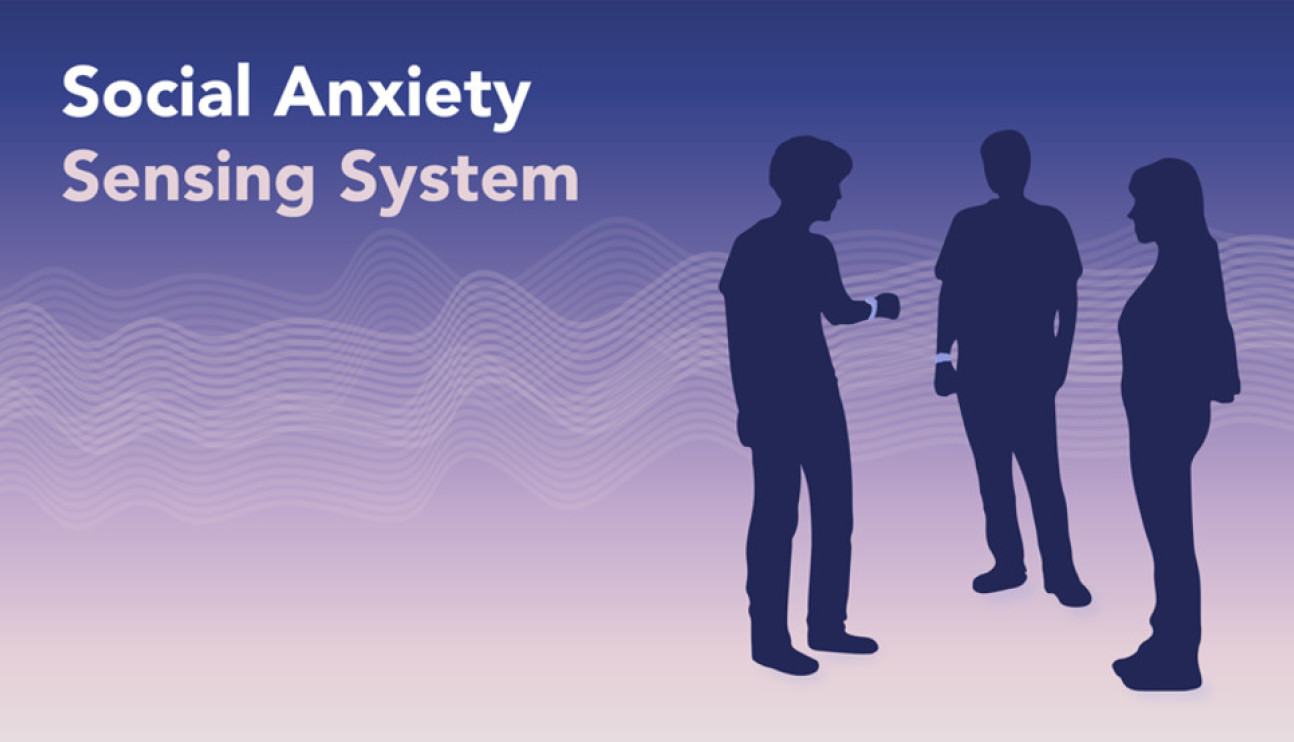 "Social anxiety greatly affects young people’s lives, but the solutions currently in place are inadequate for the rising prevalence of the problem. Detection of social anxiety using wearables may provide a novel way of recognising it, which reveals new opportunities for monitoring and treatment. This would be greatly beneficial for sufferers, the society and healthcare services. This project is one of the first to investigate whether social anxiety in young people can be detected using physiological data collected from a wearable. The results indicated that it could be possible to detect social anxiety in young people using this approach."
"Social anxiety greatly affects young people’s lives, but the solutions currently in place are inadequate for the rising prevalence of the problem. Detection of social anxiety using wearables may provide a novel way of recognising it, which reveals new opportunities for monitoring and treatment. This would be greatly beneficial for sufferers, the society and healthcare services. This project is one of the first to investigate whether social anxiety in young people can be detected using physiological data collected from a wearable. The results indicated that it could be possible to detect social anxiety in young people using this approach."
Statement from the Module Leader:
The DESIRE Award for Social Impact has been given to “Social Anxiety Sensing System” within the Solo Project module led by Dr. Celine Mougenot. The panel was particularly impressed by Ruksana Shaukat-Jali’s project which pioneers the detection of social anxiety using physiological data collected from a wearable. By revealing new opportunities for monitoring and treatment of social anxiety, the project is expected to be greatly beneficial for sufferers, the society and healthcare services.
DESIRE award for Creativity
Winner: Federico Tiersen
Project title: Holdable Devices: Making Our Phones Good for Our Brains
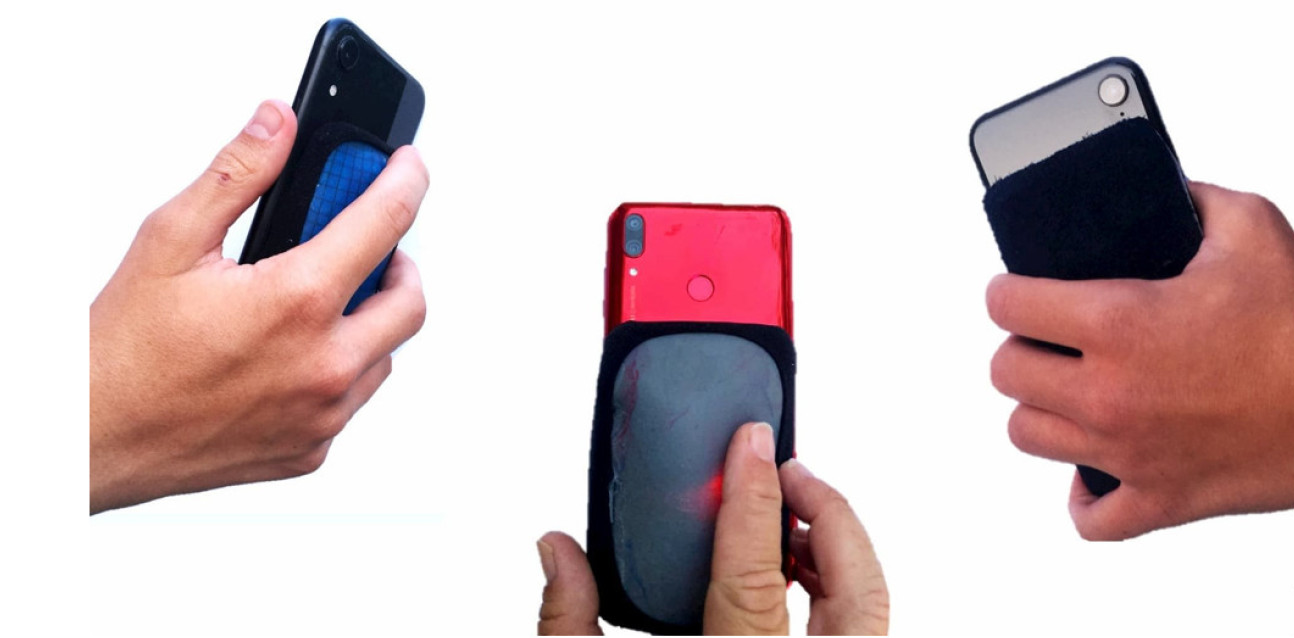 "Holdable Devices have the ability to sense when you use your phone inattentively or compulsively. They then induce mindfulness and reflection through tactile feedback and abstract visualisations, so you effortlessly regain control of your phone, your time and your mind. User-centred design, psychology and engineering methodologies were combined to create tangible interfaces that tackle the underlying mechanisms of problematic smartphone habits. An integrated hardware and software solution accurately classifies potentially unhealthy behaviours (e.g., scrolling or tapping through social media, frequently checking for notifications)."
"Holdable Devices have the ability to sense when you use your phone inattentively or compulsively. They then induce mindfulness and reflection through tactile feedback and abstract visualisations, so you effortlessly regain control of your phone, your time and your mind. User-centred design, psychology and engineering methodologies were combined to create tangible interfaces that tackle the underlying mechanisms of problematic smartphone habits. An integrated hardware and software solution accurately classifies potentially unhealthy behaviours (e.g., scrolling or tapping through social media, frequently checking for notifications)."
Statement from the Module Leader:
The DESIRE Award for Creativity has been given to “Holdable Devices: Making Our Phones Good for Our Brains” within the Solo Project module led by Dr. Celine Mougenot. The panel was very impressed by Federico Tiersen’s tangible interface that can detect when a phone is used inattentively or compulsively and induce mindfulness through tactile feedback and abstract visualisations. User-centred design, psychology and engineering were combined to create interfaces that tackle the underlying mechanisms of problematic smartphone habits.
DESIRE award for Technological Breakthrough
Winner: Minal Choudhary
Project title: IUC: A Novel Non-Hormonal Contraceptive
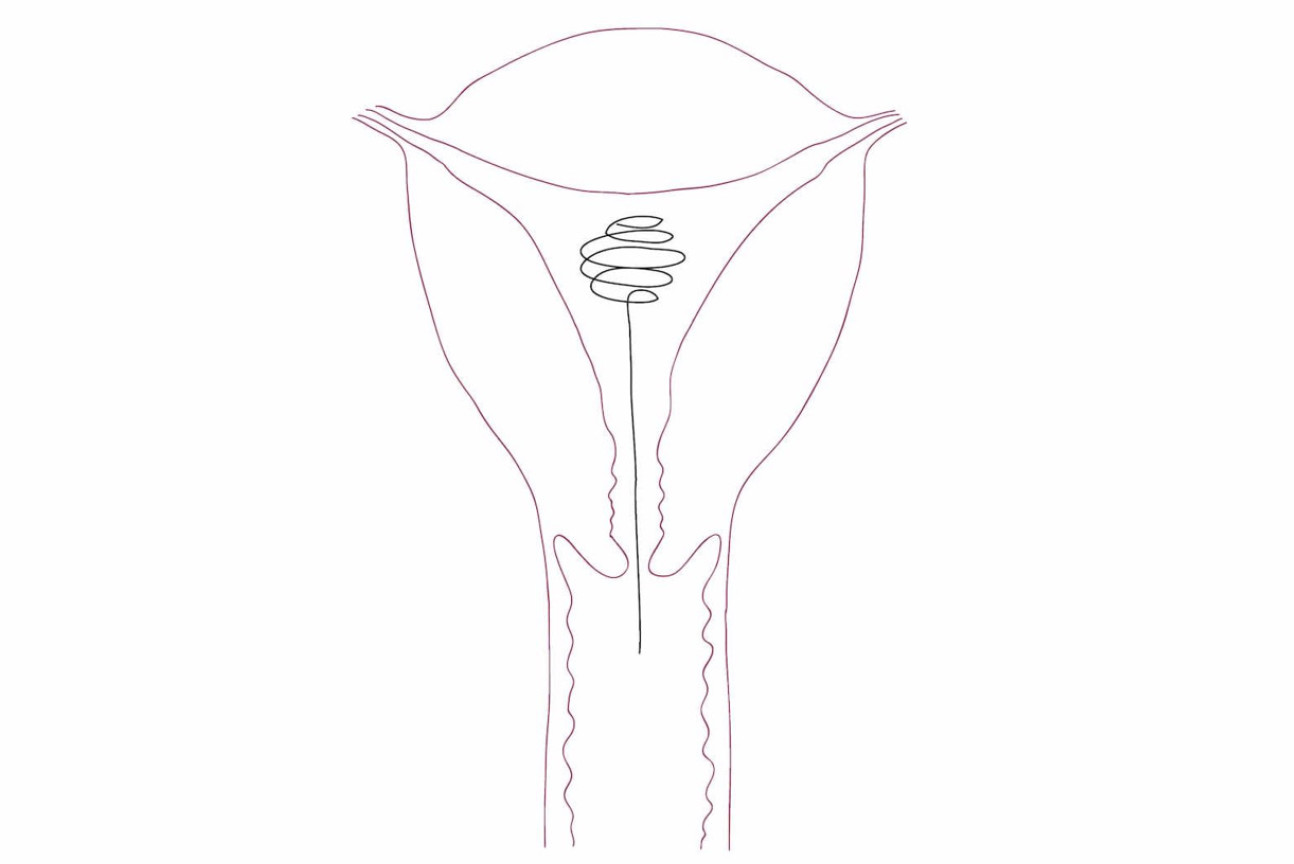 "The IUC is a smaller, softer and more flexible copper intrauterine device, which aims to reduce the pain points associated with current IUDs."
"The IUC is a smaller, softer and more flexible copper intrauterine device, which aims to reduce the pain points associated with current IUDs."
Statement from the Module Leader:
The DESIRE Award for Technological Breakthrough has been given to “IUC: A Novel Non-Hormonal Contraceptive” within the Solo Project module led by Dr. Celine Mougenot. The panel was impressed by Minal Choudhary’s proposal to disrupt the field of intrauterine contraception using a combined approach in service design, additive manufacturing and materials science. This novel intra-uterine device (IUD) – smaller, softer and more flexible than competitors - is expected to reduce women’s pain and health complications associated with current IUDs.
Prizes for 2018/19
- Year 1 DE1-DES1 Human Centred Design Engineering
- Year 3 DE3-GP Design Engineering Futures - Group Project
- Year 4 DE4-SPR Solo Project
Year 1 - Human Centred Design Engineering
Assignment:
Human Centred Design Engineering
Statement from the Module Leader:
The Human Centred Innovation Project asks first year students to develop a team brand within which each student designs a product to improve a target user’s physical wellbeing. In addition to considerations for the technical aspects of a physical product design, the students consider an accompanying business model and seek feedback throughout the design process to ensure the design is desirable. The awarded students all were in the top ten percent of the module overall and received high marks in both the individual and group parts of the project.
Winners:
Project title and description:
Clean Kit by Noor Ali
CleanKit aims to particularly improve personal hygiene for homeless people who have limited access to basic hygiene products and services.

"It presents an alternative to using public facilities that may evoke user shame and embarrassment, keeping hygiene privatefor homeless people as it is for the wider public. Physical self-care is vital for preventing minor health problems becoming serious illnesses while also rebuilding the user’s sense of self and dignity."
Project title and description:
Endorphus by Theo Kane
Punch for fun

"The user must punch or kick the bag when it is upright, this is indicated by the LED’s at max intensity. If the user succeeds the lights will flash green if not red. The user should try to build up a streak of successful hits with increasing difficulty."
Project title and description:
We by Abigail Langbridge
Socially inclusive gym equipment design for Cerebral Palsy

"We is an adaptive crutch handle designed to enable people with cerebral palsy and other more ‘invisible’ disabilitiesto build muscle strength holistically by supplementing their physiotherapy with e-Sports played in a group settingusing tools such as the Nintendo Wii Balance Board. We aims to improve both the physical and mental wellbeing ofpeople using the handle by making exercise easy, non-threatening, and most of all fun."
Project title and description:
SwaddlePack by Rui Li
Safety and Protection for the Homeless: "Be Safe, Feel Safe"

"Engineered combination of the sleeping bag and backpack to protect homeless individuals from street violence. It takes account of safety, privacy, and portability, while also making an effort to facilitate connections between rough sleepers and their local community by establishing a safeguard system."
Project title and description:
Target by Patrick McGuckian
The AnyShape Target

"Target is a fun way to get active in the workspace. Continuous player feedback and testing throughout its development process means it’s simple ball game is fun to play for people of any ability."

Project title and description:
Facio Fuggente by Alberto Montemiglio
At facio we aim at enabling everyone to enjoy physical exercise

"Fuggente enhances everyone’s experience in swimming pools. It also allows paraplegic people to enter and exit the water autonomously. Unlike usual, stigma-carrying products for disability, designed solely for disabled people, Fuggente is designed for the enjoyment of everyone.
Fuggente in particular aims at educating the new generations towards a world where disabled people are de-stigmatised and homogeneously integrated with the rest of the population."
Year 3 - Design Engineering Futures
Assignment:
Group Project
Winners:
Melisa Mukovic, Will Pepera, Alfie Thompson, Oliver Thompson, Richard Zhang with: Your mental health in a future workspace - Embla
https://youtu.be/PhbPW3ut4oU


Statement from the Module Leader:
‘Embla’ envisages a near future where a suite of wearable and environmental sensors are part of an integrated system to optimise workplace environments and mental wellbeing through responsive sensory inputs such as lighting, smell, air quality and sound. The team’s work was distinguished by the exceptional quantity and quality of practical prototyping and testing carried out to explore and validate the concept ideas, culminating in the impressive presentation of a complete environment where participants could directly experience the final concepts.
Winners:
Minal Choudhary, Sam Willis, Tom Woodburn with: Untethered robots - Ro-Biotics


Statement from the Module Leader:
‘Ro-biotics’ is an innovative futures concept to tackle the global anti-biotics resistance crisis. The concept is based on injectable micro-scale 4D bio-sensitive smart actuating star shaped ‘robots’ which capture and destroy infected material. From the start the team adopted a highly focused and professional approach; identifying the importance of defining a distinctive proposition and for this to be informed and validated by excellent investigation and collaboration with relevant experts.
Year 4 - Solo Project
DESIRE Award for Social Impact
Project Title:
AFFLO - an AI-enabled wearable device to track and record asthmatic symptoms and triggers
Statement from Module Leader:
AFFLO wearable monitor has the potential to change the life of 235 million people who live with asthma. The AI-enabled wearable and app provide users with predictions about their personal triggers, based on the analysis on their respiratory signals and environmental conditions, thus allowing them to make informed decisions to minimize their asthmatic symptoms.
Winner:
Anna Bernbaum

DESIRE award for Technological Breakthrough
Project Title:
OLYMPIC, a Modular Prosthetic Hand with Novel Finger and Wrist Coupling Mechanisms
Statement from Module Leader:
Lois has extended the state of the art in the design of dexterous prosthetic hands by implementing the first fully modular, tendon-driven prosthetic hand, capable of achieving high dexterity and simple maintenance. This system will allow the seamlessly testing of multiple designs of fingers and palms for both grasping and in-hand manipulation, something that is not possible nowadays.
Winner:
Lois Liow

DESIRE Award for Creativity
Project Title:
Art blanche - Tangible memories. Study of user experience and tangible representations of human interactions with interactive installations
Statement from Module Leader:
Art Blanche is an interactive machine that creates a visual representation of the movement of a spectator on a piece of paper, thus allowing people to produce a visual piece of art through dance and movement. Using recent advances in human-centered design of interactive systems and focusing on user experience, the project showcases an original use of technology for the implementation of a novel application.
Winner:
Beatriz Lopez Lopez-Neira

Prizes for 2017/18
Year 1 - Design 1
Assignment:
Human Centred Wellbeing, Spring & Summer 2018
Statement from Module Leader:
In the first year, students develop a product focusing on human factors. The assignment requires that students balance the demands of an overarching group brand, a product developed through feedback from users and a business model focusing on customers. The final products were assessed by a panel consisting of members of staff and industry assessors. This year, the panel decided to give the award to four individuals whose work stood out in terms of their process, prototyping, business model considerations and contributions to the broader brand.
Winners:
Maria Higgins – Bikefitter (with contributions to the Sporteknik brand)

"Bikefitter allows you to accurately and consistently measure and transfer your fitto other bikes and geometries. It allows easy and precise measurement of the three contact points and the angle in between with digital angle measurement.It is also has an attachment to allow measurement of traditional Stack and Reach, making easy comparison to manufacturer’s bike sizing charts.So whether you are eating miles on your road bike, churning up mud on your cross, or bouncing down rocks on your mountain bike, all can have the right fit to ensure you don’t get those niggles and injuries that stops you riding.Bike fitter folds up and stores into a neat hard wearing case making it an essential piece of kit for any serious bike rider."
Josh Anderson – Veer: the all new portable pullup bar (with contributions to the Motus brand

"The unique, robust pullup bar that can compact into space 16 times smaller than it’s original size: Upper body workouts during travel will never be out of reach.
The bar can work on any standard single door with an architrave, and will collapse into a size that will effortlessly fit in the hand luggage requirements of all major airlines."
Muhammad (Saym) Hussain – Pollution Kills: a smart textile solution (with contributions to the ITIO brand)

"The Pollution Kills jacket by ITIO discretely filters air pollution without the need to cover one’s face, and provides a bold statement to raise awareness of the issue. Through a system of embedded filtration channels on the inside of the jacket and a simple design on the outside, pollutants are absorbed without distracting from one’s aesthetics and the jacket add value to one’s personal style."
Sana Pirmohamed – Travel Gym: a portable toning kit (with contributions to the Motus brand)

"The components form a modular system, and can be joined to form different pieces of exercise equipment including:
- Ab Roller
- Push Up Bars
- Skipping rope
- Resistance band weights
Additionally, a camera and app are provided to analyse body posture and aid users in following a workout correctly and easily."
Year 3 - Industrial Design
Assignment:
Industrial Design lo-fi prototyping
Statement from Module Leader:
As part of the Industrial Design elective students took part in a one day intensive lo-fi prototyping session in the School workshops to explore and consolidate their concept ideas. Towards the end of the day the module tutors; Dr Stephen Green and Olga Kravchenko, reviewed the outcomes and Lois Liow was judged to have comprehensively embraced the value of lo-fi prototyping and utilised the limited time available to produce an excellent range of models exploring a variety of formats for her ‘Watchful’ concept. Her idea consists of fashion orientated wearable technology elements, including backward facing image capture, which can provide heightened levels of personal protection in a variety of contexts. Therefore the Desire award is given for this combination of the quality of the design idea and the associated lo-fi prototying activity. Lois received her award at an Industry Review evening attended by the whole year group, staff and a number of industry representatives.
Winner:
Lois Liow
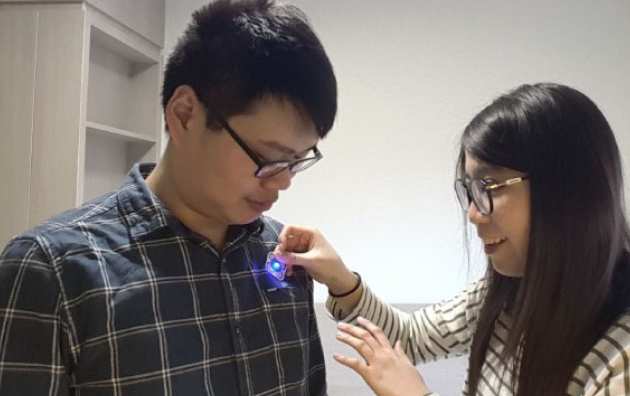
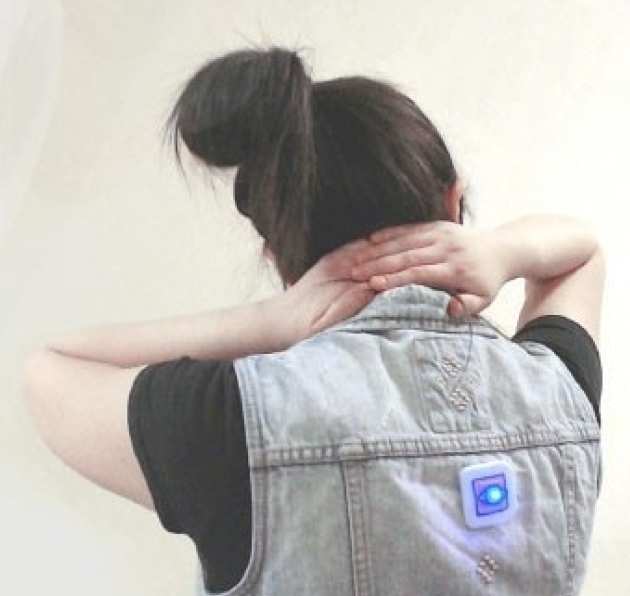
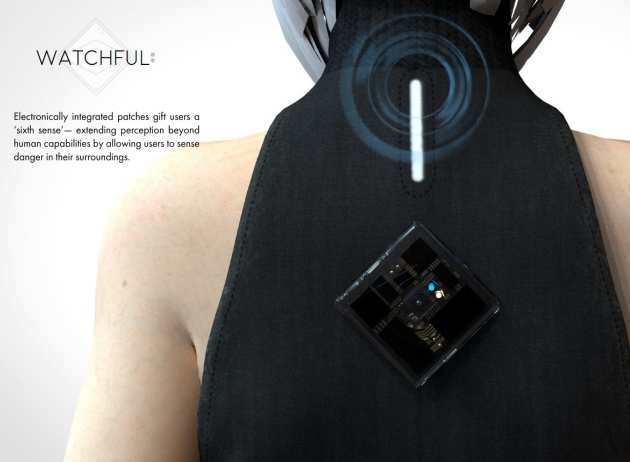
Contact us
Dyson School of Design Engineering
Imperial College London
25 Exhibition Road
South Kensington
London
SW7 2DB
design.engineering@imperial.ac.uk
Tel: +44 (0) 20 7594 8888

